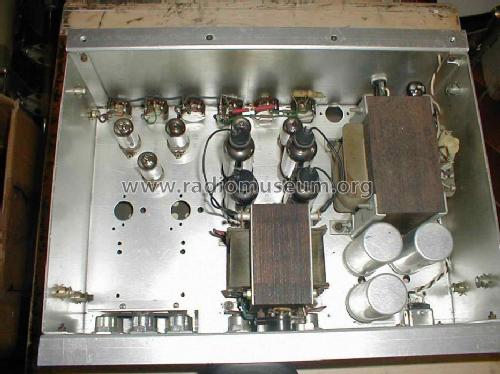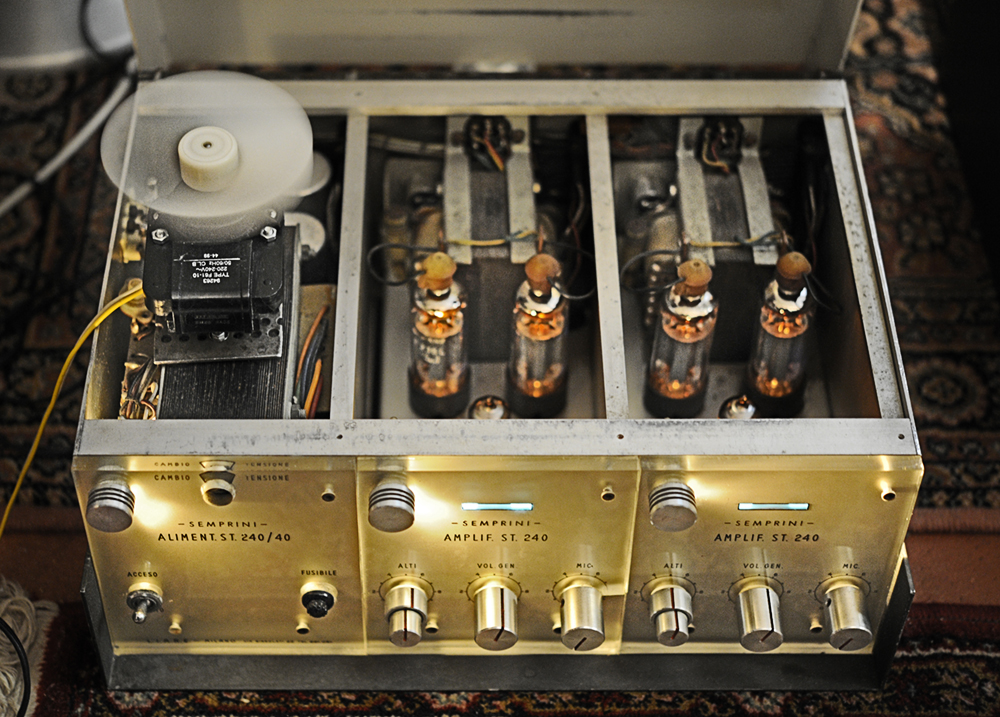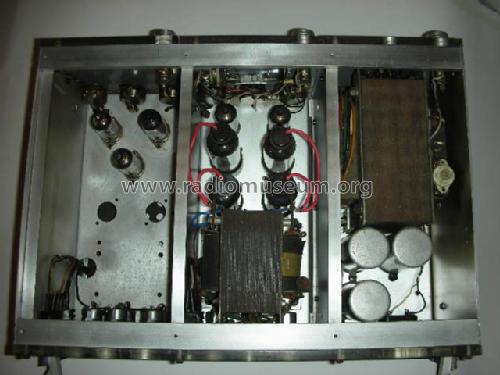Originally posted by Helmholtz
View Post
Announcement
Collapse
No announcement yet.
5F6A low volume
Collapse
X
-
There was a long thread here about it some time ago. Some trusted documentation was enlisted. I looked for it, but unfortunately "filament voltage" is such a vague term that I couldn't find it easily. I will look some more later and link it if I find it."Take two placebos, works twice as well." Enzo
"Now get off my lawn with your silicooties and boom-chucka speakers and computers masquerading as amplifiers" Justin Thomas
"If you're not interested in opinions and the experience of others, why even start a thread?
You can't just expect consent." Helmholtz
-
http://www.tubecad.com/july2000/page10.htmlOriginally posted by Chuck H View PostThere was a long thread here about it some time ago. Some trusted documentation was enlisted. I looked for it, but unfortunately "filament voltage" is such a vague term that I couldn't find it easily. I will look some more later and link it if I find it.
https://music-electronics-forum.com/...ad.php?t=35157
https://music-electronics-forum.com/...ad.php?t=18776Originally posted by EnzoI have a sign in my shop that says, "Never think up reasons not to check something."
Comment
-
Thank you! It was the drop DC heater voltage thread. I didn't check that one because it's DC and I remembered the discussion being predominantly AC. Where that thread sort of ended up because I straight up hijacked it "Take two placebos, works twice as well." Enzo
"Take two placebos, works twice as well." Enzo
"Now get off my lawn with your silicooties and boom-chucka speakers and computers masquerading as amplifiers" Justin Thomas
"If you're not interested in opinions and the experience of others, why even start a thread?
You can't just expect consent." Helmholtz
Comment
-
It was a classic EU compromise (fudge). We (UK) were 240V and Europe was 220V so they set the harmonised (fudged) EU voltage limits to be 230V +10% -6% but no country actually changed its voltage. The 250V I measure here and the 220V measured in Italy are both legal! (But I still want to stay in the EUOriginally posted by Helmholtz View PostNominal mains voltage in the whole EU (including Italy and GB) is 230V (+/-23V) since 1987 (IEC standard 60038). )
Last edited by Dave H; 12-10-2018, 09:37 PM.
)
Last edited by Dave H; 12-10-2018, 09:37 PM.
Comment
-
I was member of a mains related IEC standardization group for 10 years and know that the UK utilitiy representatives signed IEC 600038. You may call it 240V +5%/-10%, but it is still within the harmonized European voltage range. I wonder who is fudging. BTW, Germany did change from 220V to 230V.Originally posted by Dave H View PostIt was a classic EU compromise (fudge). We (UK) were 240V and Europe was 220V so they set the harmonised (fudged) EU voltage limits to be 230V +10% -6% but no country changed its voltage. The 250V I measure here and the 220V measured in Italy are both legal! (But I still want to stay in the EU )Last edited by Helmholtz; 12-10-2018, 10:26 PM.- Own Opinions Only -
)Last edited by Helmholtz; 12-10-2018, 10:26 PM.- Own Opinions Only -
Comment
-
UK mains voltage is now 230V +10% -6%. It's not fudging if it meets the standardOriginally posted by Helmholtz View Postthe UK utilitiy representatives signed IEC 600038. You may call it 240V +5%/-10%, but it is still within the harmonized European voltage range. I wonder who is fudging.
The fudge was opening the window wide enough for everyone to get in without anyone having to change voltage.
Comment
-
When I was young (mid/late 60īs) Italian PA equipment designers knew their excellent amplifiers would be used anywhere from modern Technical Milan and guaranteed 220V to very little towns fed from long and too thin lines or small inadequate local "cooperatives" , where a brownout would be the normal situation, not the exception.
So every mixer/tape_echo/power_amps wheeled rack included at the bottom a "Power conditioner" , with an unusually large range of adjustment.
This particular Semprini unit has both coarse (40V steps) switcher, plus a fine 1 or 2V per step rotary control:


I used these 50 years ago and to this day am impressed by their quality, these do not look like Audio power amps but rather commercial TV or FM transmitters, repeaters, etc.
Excellent idea which should have been carried to this day, at least for popular touring bands.
Semprini always offered the highest quality "military/radio_amateur" style construction:


 Juan Manuel Fahey
Juan Manuel Fahey
Comment
-
Yes, according to European standards. But we actually have the 220VOriginally posted by Helmholtz View PostNominal mains voltage in the whole EU (including Italy and GB) is 230V (+/-23V) since 1987 (IEC standard 60038).
I agreeOriginally posted by Dave H View PostIt was a classic EU compromise (fudge). We (UK) were 240V and Europe was 220V so they set the harmonised (fudged) EU voltage limits to be 230V +10% -6% but no country actually changed its voltage. The 250V I measure here and the 220V measured in Italy are both legal! (But I still want to stay in the EU )
)
Comment
-
I think I've made a big mess even if I do not know how it happened. While I was touching with a chopstick the base board looking for the cause of the hum the amp is died. I read the anodic voltage at standby switch and there was strange. Then I read at secondary power trasformer output (325+325 VAC) and I think the power trasformer is died. These are the readings between ground and each of the two output. It should be 325VAC
These between the two output. It should be 650VAC. Between ground and Bias output I read 18VAC. It should be 50VAC. Also I read resistance between the power output and it is 74 Ohm, then it is right.
Comment
-
Swap the power tubes in their sockets and test the anodes again. Does the low voltage reading follow the tube or stay with the socket?"Take two placebos, works twice as well." Enzo
"Now get off my lawn with your silicooties and boom-chucka speakers and computers masquerading as amplifiers" Justin Thomas
"If you're not interested in opinions and the experience of others, why even start a thread?
You can't just expect consent." Helmholtz
Comment
-
-
So some questionable/cold/flaky soldered union opened while chopsticking.Originally posted by vinceg View PostI think I've made a big mess even if I do not know how it happened. While I was touching with a chopstick the base board looking for the cause of the hum the amp is died.
Find and resolder it.
"Strange" ? ... can you please say some number instead?I read the anodic voltage at standby switch and there was strange.Luckily for you, I donīt think soThen I read at secondary power trasformer output (325+325 VAC) and I think the power trasformer is died.
Transformers are expensive and hard to ship.
Please do not upload 3000 x 5000 pixel pictures.These are the readings between ground and each of the two output. It should be 325VAC (picture shows 314 and 223 VAC)
Slow to load, waste of bandwidth and server space and in any case NO screen can display them.
Either set camera to no more than 1000 or 1500 pixel maximum or reduce size using any Graphics software before uploading.
Back to your tests: I do not suspect transformer (which if dead would be either open or smoking and burning fuses) but losing ground or some wiring.
Which is confirmed by:
And you have very normal 694VAC ... remember unloaded transformers usually show higher than nominal (loaded) voltages.These between the two output. It should be 650VAC.
Another stong hint at miswiring.Between ground and Bias output I read 18VAC. It should be 50VAC.
Reread between bias tap and center tap and I bet youīll find your "lost" 50 VAC.
In an nutshell, your "ground" or wiring to it is highly suspect.
Not sure you are talking plate to plate OT DC resistance or 325+325 VAC winding end to end, but in any case that sounds normal.Also I read resistance between the power output and it is 74 Ohm, then it is right.
Again please send smaller pictures, not larger than , say, 1200 x 166 pixel or thereabouts, and even smaller if possible.
Only place where we want high resolution ones is when you show full chassis and we want to be able to zoom in to read parts values.
We are talking winding AC voltages here.Swap the power tubes in their sockets and test the anodes again. Does the low voltage reading follow the tube or stay with the socket?
"Secondary" in Latin language Countries refers to "winding" in Anglo ones. Juan Manuel Fahey
Juan Manuel Fahey
Comment
-
Yes, I skim read and only caught "anodic". Then saw the two readings and thought he was measuring plate voltages. I'm on board now."Take two placebos, works twice as well." Enzo
"Now get off my lawn with your silicooties and boom-chucka speakers and computers masquerading as amplifiers" Justin Thomas
"If you're not interested in opinions and the experience of others, why even start a thread?
You can't just expect consent." Helmholtz
Comment
Comment